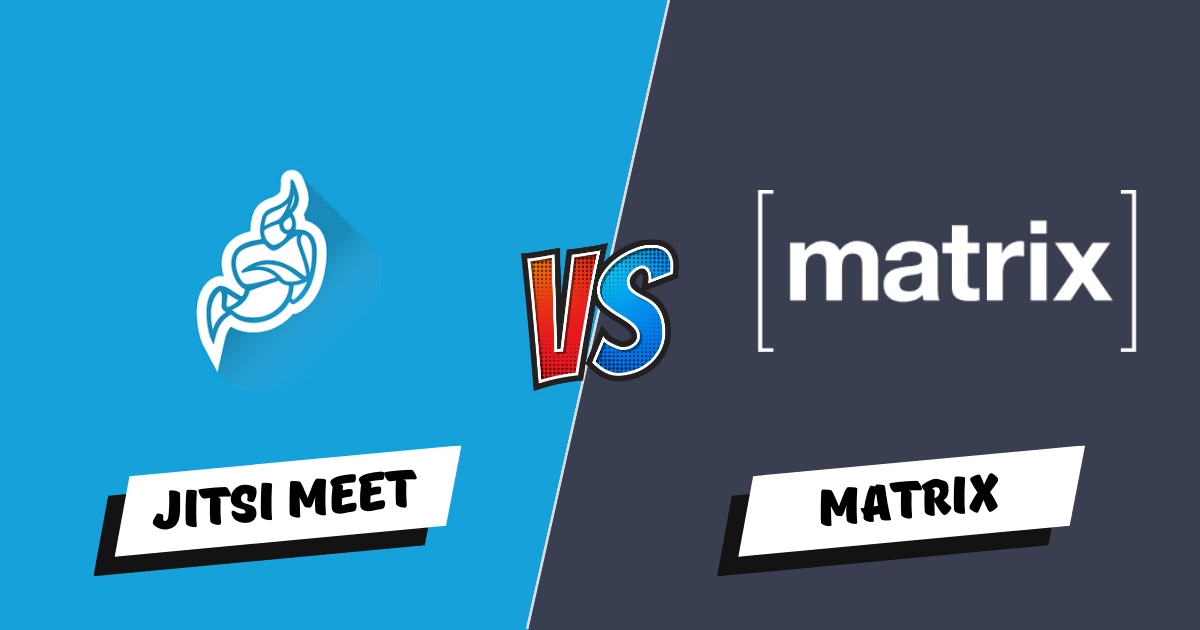In the landscape of communication tools, Jitsi and Matrix emerge as contenders for secure and efficient collaboration. Delve into their nuances to discover the ideal solution for your needs.
Jitsi: Simplified Open-Source Communication
Jitsi, an open-source video conferencing solution, emphasizes simplicity and accessibility. With features like high-quality video calls and screen sharing, Jitsi aims to provide an easy-to-use platform for secure online meetings.
Advantage of Jitsi
- Open-source architecture for customization.
- User-friendly interface and minimal setup.
- Broad platform compatibility.
Disadvantage of Jitsi
- Optimal performance relies on a stable internet connection.
- Limited advanced features compared to some proprietary platforms.
Matrix: Decentralized Communication Ecosystem
Matrix adopts a decentralized approach, allowing for secure communication through its open standard and federated servers. Matrix supports text messaging, voice calls, and video conferencing, offering a comprehensive communication ecosystem.
Advantage of Matrix
- Decentralized architecture enhances security and privacy.
- Interoperability with other communication platforms.
- Versatility with various communication modes.
Disadvantage of Matrix
- Complexity in setup and configuration.
- Learning curve due to the decentralized model.
Jitsi vs Matrix
| Feature | Jitsi | Matrix |
|---|---|---|
| Type | Video Conferencing | Decentralized Communication |
| Architecture | Open Source | Decentralized |
| Encryption | Optional End-to-End | End-to-End |
| Ease of Use | User-Friendly | Learning Curve |
| Platform Compatibility | Windows, macOS, Linux, Android, iOS | Multi-platform support |
| Third-Party Integrations | Yes | Extensive |
| Customization | Limited | Highly Customizable |
| Community Support | Active | Growing |
| Interoperability | Limited | High |
| Scalability | Good | Excellent |
| Voice Calls | Yes | Yes |
| Video Conferencing | Yes | Yes |
| Text Messaging | Limited | Yes |
| File Sharing | Yes | Yes |
| Cost | Open Source (Free) | Open Source (Free) |
Choosing the Right Platform
- Prioritize video conferencing and ease of use: Jitsi Meet might be a good fit.
- Seek comprehensive communication, customization, and privacy control: Matrix offers a broader scope.
- Value open-source principles and community-driven development: Both platforms excel in this aspect.
FAQ
Jitsi's simplicity may appeal to small businesses, while Matrix's decentralized model may suit those prioritizing enhanced security.
Yes, Matrix supports interoperability, allowing integration with various communication platforms for seamless collaboration.
Jitsi is open-source and free, whereas Matrix's pricing may vary based on server and customization requirements.
Matrix allows E2EE for various functionalities and provides server choice for enhanced privacy control.









